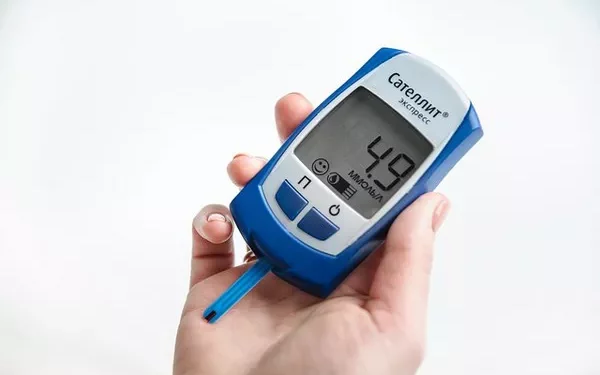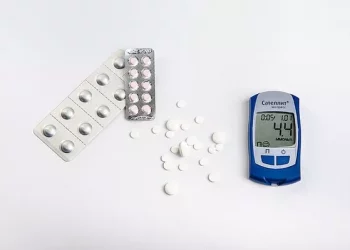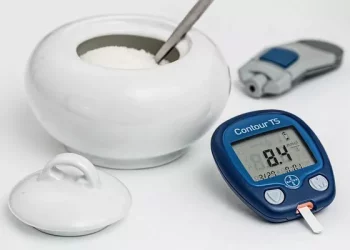For individuals managing diabetes, monitoring blood glucose levels regularly is essential. Traditionally, this has been done using glucometers that require fingerstick tests. While fingerstick testing is effective, it can be painful, inconvenient, and burdensome for many individuals. Over the years, advancements in technology have led to the development of innovative glucometers that do not require fingerstick tests. These devices offer more comfort and convenience, making it easier for individuals to manage their diabetes without the frequent pain of pricking their fingers.
This article explores the various types of glucometers that do not require fingersticks, their mechanisms of action, the benefits they provide to individuals living with diabetes, and the factors to consider when choosing a non-invasive blood glucose monitoring device.
Traditional Fingerstick Glucometers: A Quick Overview
Before delving into the non-invasive alternatives, it’s essential to understand the conventional fingerstick glucose meters, which are still widely used for blood sugar testing. These meters operate by measuring the glucose levels in a small blood sample obtained via a fingerstick. The sample is placed on a test strip, and the glucometer calculates the glucose concentration by analyzing the chemical reaction between the glucose in the blood and the reagent on the test strip.
While fingerstick glucometers are relatively affordable and accurate, they are often associated with discomfort, especially for individuals who need to test their blood glucose multiple times a day. Over time, frequent fingersticks can lead to calluses, bruising, and irritation, which can impact the overall experience of managing diabetes.
Non-Invasive Glucometers: A Revolution in Blood Glucose Monitoring
Non-invasive glucometers aim to provide a more comfortable and pain-free alternative to traditional methods of blood glucose monitoring. These devices use a variety of technologies to measure glucose levels without the need for a blood sample. While still relatively new in the market, non-invasive glucometers are gaining traction due to their ability to improve the overall diabetes management experience.
The main goal of non-invasive glucometers is to eliminate the need for fingerstick blood samples, thereby reducing discomfort, improving compliance, and enabling more frequent testing without the associated pain. However, these devices are still evolving, and their availability and effectiveness vary. Below, we explore some of the most promising non-invasive blood glucose monitoring technologies.
Types of Non-Invasive Glucometers
Continuous Glucose Monitors (CGMs)
Continuous Glucose Monitors (CGMs) are wearable devices that continuously measure blood glucose levels throughout the day and night without requiring a fingerstick. Unlike traditional glucometers, CGMs do not require blood samples, and they offer real-time data on glucose levels, providing a comprehensive picture of an individual’s blood sugar patterns.
CGMs typically consist of three main components:
A sensor that is inserted under the skin, usually on the abdomen or arm. The sensor measures glucose levels in the interstitial fluid (the fluid surrounding the body’s cells).
A transmitter that sends the glucose data from the sensor to a display device.
A display device (such as a smartphone, insulin pump, or standalone monitor) that shows the glucose readings.
The sensor is designed to be worn for a period of time (usually 7 to 14 days) before it needs to be replaced. CGMs provide continuous data, which helps individuals track fluctuations in their blood glucose levels in real time. This constant monitoring allows for better management of diabetes, as patients can quickly adjust their diet, activity, or insulin use based on the data provided by the CGM.
Some popular CGMs that do not require fingersticks for routine monitoring include:
Dexcom G6: One of the most well-known CGMs, the Dexcom G6 offers real-time continuous glucose readings and does not require fingerstick calibration. It has a small sensor that is inserted just under the skin and can be worn for up to 10 days.
Freestyle Libre 2: The Freestyle Libre 2 is another widely used CGM that offers continuous glucose monitoring. It has a sensor that is worn on the back of the upper arm and provides 14 days of continuous glucose data. Unlike traditional glucometers, it doesn’t require fingersticks for calibration.
Medtronic Guardian Connect: This CGM is also designed for continuous glucose monitoring without the need for fingersticks. The Guardian Connect system is compatible with smartphones and allows users to track their glucose levels in real time.
While CGMs are incredibly useful for individuals who require frequent glucose monitoring, they are primarily designed for people with diabetes who need continuous tracking of their glucose levels. These devices can be more expensive than traditional glucometers, but the convenience and real-time monitoring are significant advantages.
Non-Invasive Glucometers Based on Near-Infrared Spectroscopy (NIR)
Another promising non-invasive glucose monitoring technology is near-infrared spectroscopy (NIR). NIR works by using light to measure glucose levels in the skin. The principle behind this technology is that different substances absorb light at different wavelengths. Near-infrared light passes through the skin and interacts with glucose molecules, allowing the device to measure the glucose concentration based on the way the light is absorbed.
NIR technology does not require blood samples or sensor implants, making it a painless alternative for people with diabetes. The technology typically involves a handheld device that emits near-infrared light to scan the skin and analyze glucose levels. However, while NIR technology has been under development for years, it has yet to become a widely available, fully reliable option for non-invasive glucose monitoring.
Some devices in the market utilize NIR technology for glucose monitoring, although they may not be as widely used as CGMs:
The GlucoTrack: The GlucoTrack is a non-invasive glucose monitoring device that uses a combination of ultrasonic, electromagnetic, and thermal technologies to measure blood glucose levels. This device is intended to be worn on the earlobe and can provide non-invasive glucose readings without fingersticks. However, it is still undergoing further testing and development for better accuracy and reliability.
While near-infrared spectroscopy holds great promise, the technology still faces challenges in achieving accuracy comparable to fingerstick tests. The variability of skin properties and external factors like hydration levels can impact the readings, making this technology more suitable for occasional monitoring rather than continuous tracking.
Optical Coherence Tomography (OCT) Glucometers
Optical Coherence Tomography (OCT) is a non-invasive imaging technique that uses light waves to capture high-resolution images of the body’s internal structures. Some researchers and companies are exploring the use of OCT for non-invasive glucose monitoring. OCT works by measuring how light interacts with tissues under the skin, which can provide insights into glucose levels in the body.
In the case of glucose monitoring, OCT technology is being adapted to detect subtle changes in tissue composition caused by fluctuations in glucose levels. While still in the research phase, OCT-based glucometers hold promise for providing an accurate, non-invasive method for blood glucose testing. However, as of now, OCT glucometers are not yet commercially available for general use.
Transdermal Glucose Monitoring Systems
Transdermal glucose monitoring systems work by measuring glucose concentrations through the skin. These systems use technologies such as micro-needles, iontophoresis, or reverse iontophoresis to extract glucose from interstitial fluid or sweat without drawing blood.
Iontophoresis: This technique uses a small electric current to drive glucose from the skin into a sensor for analysis. The technology is non-invasive and does not require blood samples or fingersticks.
Microneedles: Microneedles are tiny needles that painlessly penetrate the outer layers of the skin to extract glucose. These micro-needles are typically small enough that they do not cause significant discomfort or bleeding.
While these technologies are promising, they are still under development and have yet to achieve widespread availability or acceptance in the market.
Advantages of Non-Invasive Glucometers
Non-invasive glucometers provide several benefits over traditional fingerstick testing:
Comfort and Convenience: The most obvious benefit of non-invasive glucose monitoring is the lack of fingerstick pain. Many individuals with diabetes struggle with the discomfort of pricking their fingers multiple times per day. Non-invasive glucometers eliminate this pain and make testing more comfortable.
Increased Compliance: Because non-invasive glucometers are less painful and more convenient, individuals may be more likely to test their glucose levels regularly. This can lead to better diabetes management and more consistent monitoring, which helps reduce the risk of complications.
Continuous Monitoring: Some non-invasive devices, like CGMs, offer continuous glucose monitoring. This provides a more comprehensive picture of glucose trends throughout the day, allowing individuals to make real-time adjustments to their diet, activity, or insulin use.
Improved Quality of Life: Non-invasive glucose monitoring reduces the burden of daily glucose testing and enables individuals to monitor their levels discreetly, without the need for carrying test strips and lancets. This contributes to a better overall quality of life for individuals living with diabetes.
Challenges and Limitations of Non-Invasive Glucometers
Despite their advantages, non-invasive glucometers are not without challenges:
Cost: Non-invasive glucometers, especially CGMs, can be expensive. Although some insurance plans may cover the cost of these devices, they can still be prohibitively expensive for individuals without adequate coverage.
Accuracy: One of the main concerns with non-invasive glucometers is their accuracy. While CGMs provide real-time glucose data, they measure glucose levels in interstitial fluid rather than blood, which can lead to slight discrepancies in readings. Similarly, technologies like NIR and OCT are still being refined to improve their precision.
Availability: Non-invasive glucometers are not yet widely available, especially those based on newer technologies such as NIR or OCT. Many of these devices are still undergoing clinical trials or are only available in select markets.
Calibration: Some non-invasive devices, particularly CGMs, may require occasional calibration with traditional fingerstick tests. While newer models, such as the Dexcom G6 and Freestyle Libre 2, require no calibration, some devices still rely on periodic calibration to ensure accuracy.
Conclusion
Non-invasive glucometers offer significant advantages for individuals living with diabetes, particularly by reducing the discomfort and inconvenience associated with traditional fingerstick testing. Technologies like continuous glucose monitors, near-infrared spectroscopy, and transdermal glucose monitoring systems are making it easier for individuals to manage their blood sugar levels with greater comfort and convenience.
However, these devices are still evolving, and their availability and accuracy may vary. While they are not yet a complete replacement for traditional methods of blood glucose monitoring, non-invasive glucometers provide an important step forward in the ongoing effort to improve diabetes management.
For individuals considering a non-invasive glucometer, it is important to weigh the benefits and limitations of each device and consult with a healthcare provider to determine the best option based on personal health needs and lifestyle. With continued advancements in technology, the future of diabetes management looks brighter and more comfortable than ever before.
Related topics:
What Is the Value of Random Blood Sugar Monitoring?






















